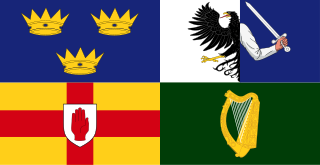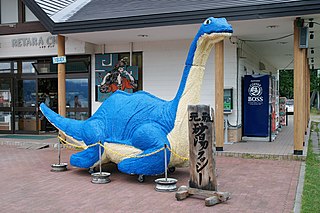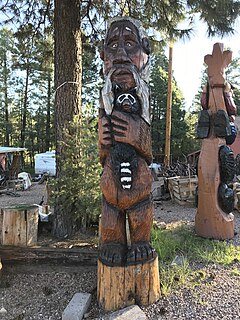 W
WBigfoot, also commonly referred to as Sasquatch, is a purported ape-like creature said to inhabit the forests of North America. A prominent subject within Canadian and American folklore, supposed evidence of the existence of Bigfoot includes numerous anecdotal visual observations as well as disputed video and audio recordings, photographs, and casts of large footprints. Some of these are speculated or known to be hoaxes. Bigfoot has become an icon within the fringe subculture of cryptozoology and an enduring element of popular culture.
 W
WIn American folklore, Champ or Champy is the name of a lake monster said to live in Lake Champlain, a 125-mile (201 km)-long body of fresh water shared by New York and Vermont, with a portion extending into Quebec, Canada. The legend of the monster is considered a draw for tourism in the Burlington, Vermont and Plattsburgh, New York areas.
 W
WThe chupacabra or chupacabras is a legendary creature in the folklore of parts of the Americas, with its first purported sightings reported in Puerto Rico in 1995. The name comes from the animal's reported vampirism—the chupacabra is said to attack and drink the blood of livestock, including goats.
 W
WThe Dobhar-chú, or King Otter, is a creature of Irish folklore. It resembles both a dog and an otter, though it sometimes is described as half dog, half fish. It lives in water and has fur with protective properties.
 W
WThe Dover Demon is a creature reportedly sighted in the town of Dover, Massachusetts on April 21 and April 22, 1977.
 W
WIn Canadian folklore, the Igopogo is a mythical creature said to dwell in Lake Simcoe, Ontario. The creature's name is ostensibly based on the Ogopogo, of Lake Okanagan, British Columbia, and also the title of the 1952 book I Go Pogo, a slogan often mentioned in the comic. Other nicknames for the Igopogo include Beaverton Bessie, after Beaverton, Ontario, and "Kempenfelt Kelly" after the bay that extends from the lake into the city of Barrie, Ontario. The city of Barrie erected a sculpture of the Igopogo at the waterfront.
 W
WIn the Southern New Jersey and Philadelphia folklore of the United States, the Jersey Devil is a legendary creature said to inhabit the Pine Barrens of South Jersey. The creature is often described as a flying biped with hooves, but there are many variations. The common description is that of a bipedal kangaroo-like or wyvern-like creature with a horse- or goat-like head, leathery bat-like wings, horns, small arms with clawed hands, legs with cloven hooves, and a forked tail. It has been reported to move quickly and is often described as emitting a high-pitched "blood-curdling scream".
 W
WKussie is a Japanese lake monster said to be living in Hokkaidō's Lake Kussharo. The naming convention was likely borrowed from that of Loch Ness's Nessie.
 W
WThe Loch Ness Monster, or Nessie, is a creature in Scottish folklore that is said to inhabit Loch Ness in the Scottish Highlands. It is often described as large, long-necked, and with one or more humps protruding from the water. Popular interest and belief in the creature has varied since it was brought to worldwide attention in 1933. Evidence of its existence is anecdotal, with a number of disputed photographs and sonar readings.
 W
WThe Mogollon Monster, also known as the Arizona Bigfoot, is purported to be an ape-like creature, similar to descriptions of Bigfoot, reported to dwell in central and eastern Arizona along the Mogollon Rim.
 W
WIn cryptozoology, the Mokele-mbembe, Lingala for "one who stops the flow of rivers", is a water-dwelling entity that supposedly lives in the Congo River Basin, sometimes described as a living creature, sometimes as a spirit. Those that heard or that allegedly saw the entity describe it as a large quadrupedal herbivore with a smooth skin, a long neck and a single tooth, sometimes said to be a horn.
 W
WThe Mongolian death worm is a creature alleged to exist in the Gobi Desert.
 W
WIn West Virginia folklore, the Mothman is a humanoid creature reportedly seen in the Point Pleasant area from November 15, 1966, to December 15, 1967. The first newspaper report was published in the Point Pleasant Register, dated November 16, 1966, titled "Couples See Man-Sized Bird ... Creature ... Something". The national press soon picked up the reports and helped spread the story across the United States.
 W
WIn modern Japanese folklore, the Ningen (ニンゲン) is an aquatic humanoid creature reported to inhabit the subantarctic oceans. The homophone in Japanese 人間 (nin-gen) means "human". It is commonly considered to be a cryptid, a mysterious animal whose existence or survival is disputed or unsubstantiated.
 W
WThe Sea Swine was the name given to a variety of sea-dwelling or mythological creatures throughout history. The earliest mention of a 'sea swine' can be traced to ancient Greece. In this context, the name has been interpreted to mean 'porpoise', as a porpoise and pig have similar round body shapes. However, this is disputed by some classical scholars who believe that the 'porcus' section of the name referred instead to grunts emitted from fish in question, not any physical similarities to the pig.
 W
WThe Yeti, in Himalayan folklore, is an ape-like creature purported to inhabit the Himalayan mountain range in Asia. In western popular culture, the creature is commonly referred to as the Abominable Snowman. Supposed evidence of the Yeti's existence include anecdotal visual sightings, disputed video recordings, photographs, and casts of large footprints. Some of these are speculated or known to be hoaxes.